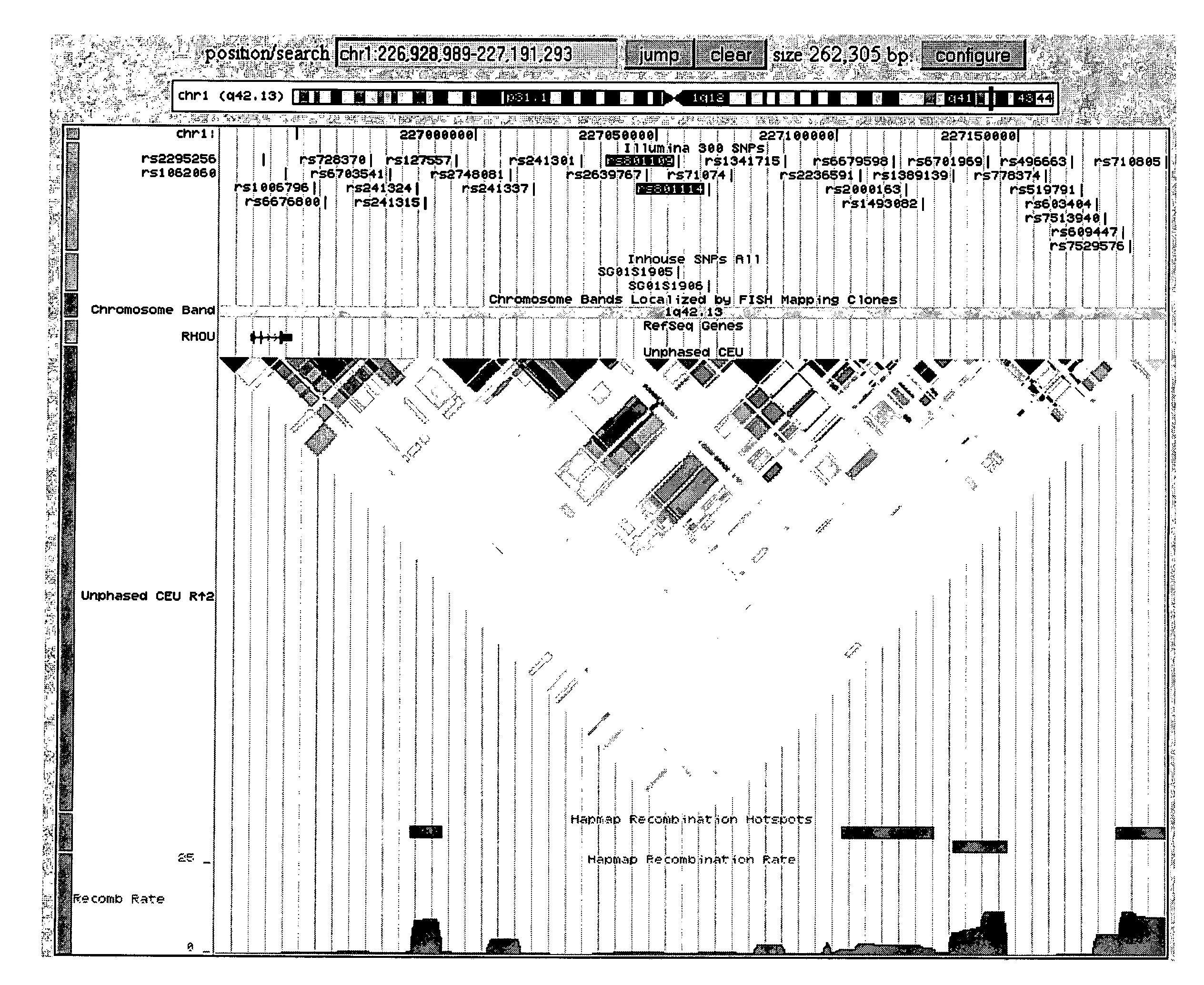Genetic Variants Predictive of Cancer Risk in Humans
a genetic variant and human cancer technology, applied in the field of genetic variants predictive of cancer risk in humans, can solve the problems of increased risk of scc and bcc, poor prognosis, and major environmental risk factor uv irradiation, and achieve the effect of reducing susceptibility
- Summary
- Abstract
- Description
- Claims
- Application Information
AI Technical Summary
Benefits of technology
Problems solved by technology
Method used
Image
Examples
Embodiment Construction
Definitions
[0069]Unless otherwise indicated, nucleic acid sequences are written left to right in a 5′ to 3′ orientation. Numeric ranges recited within the specification are inclusive of the numbers defining the range and include each integer or any non-integer fraction within the defined range. Unless defined otherwise, all technical and scientific terms used herein have the same meaning as commonly understood by the ordinary person skilled in the art to which the invention pertains.
[0070]The following terms shall, in the present context, have the meaning as indicated:
[0071]A “polymorphic marker”, sometime referred to as a “marker”, as described herein, refers to a genomic polymorphic site. Each polymorphic marker has at least two sequence variations characteristic of particular alleles at the polymorphic site. Thus, genetic association to a polymorphic marker implies that there is association to at least one specific allele of that particular polymorphic marker. The marker can comp...
PUM
| Property | Measurement | Unit |
|---|---|---|
| Fraction | aaaaa | aaaaa |
| Fraction | aaaaa | aaaaa |
| Length | aaaaa | aaaaa |
Abstract
Description
Claims
Application Information
 Login to View More
Login to View More - R&D
- Intellectual Property
- Life Sciences
- Materials
- Tech Scout
- Unparalleled Data Quality
- Higher Quality Content
- 60% Fewer Hallucinations
Browse by: Latest US Patents, China's latest patents, Technical Efficacy Thesaurus, Application Domain, Technology Topic, Popular Technical Reports.
© 2025 PatSnap. All rights reserved.Legal|Privacy policy|Modern Slavery Act Transparency Statement|Sitemap|About US| Contact US: help@patsnap.com



